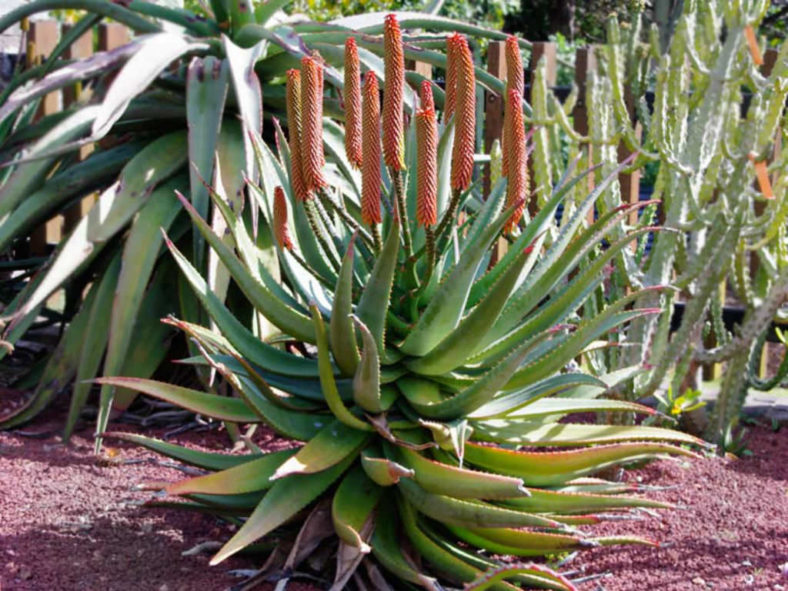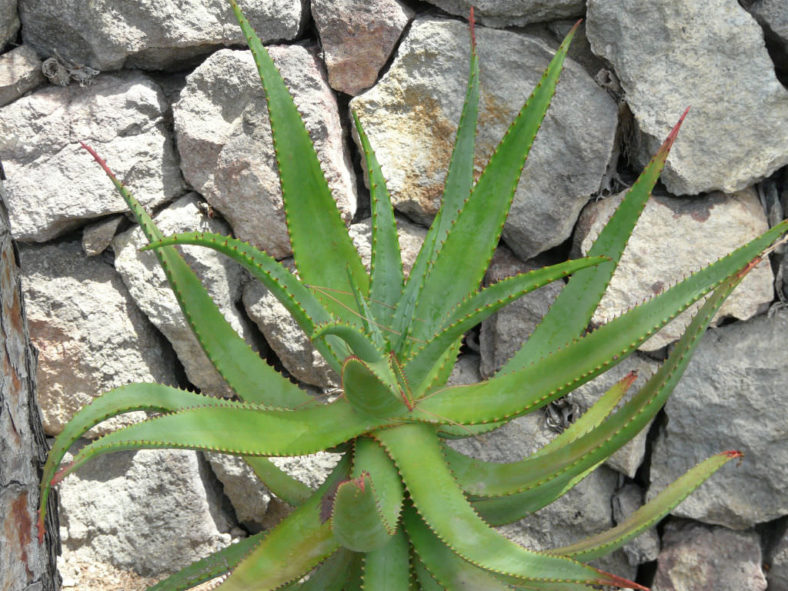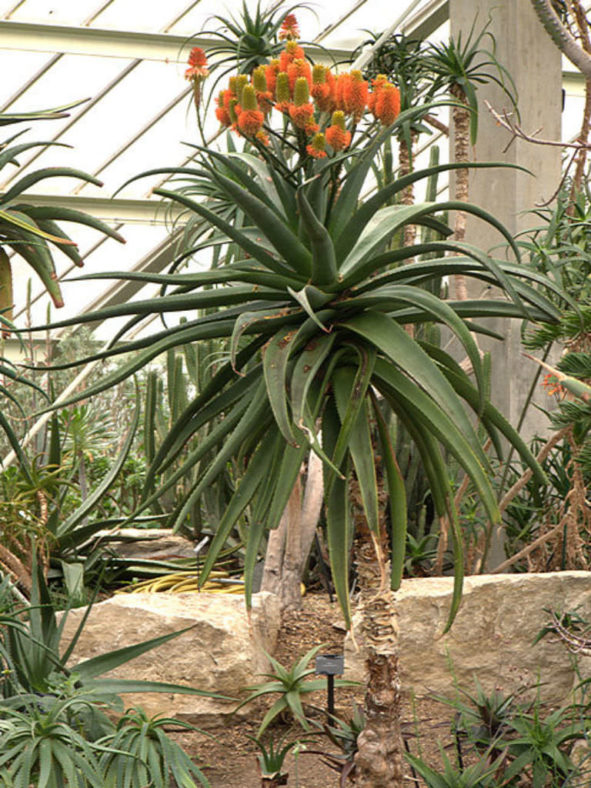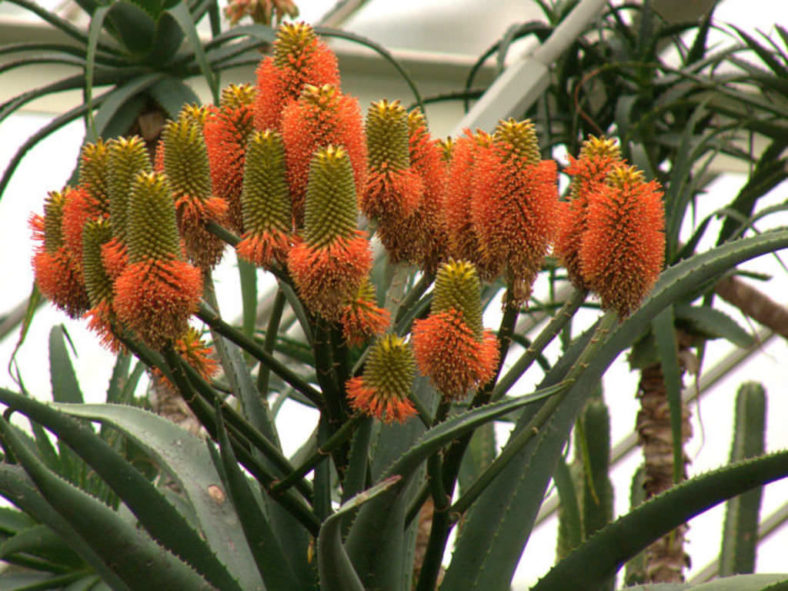Scientific Name
Aloe rupestris Baker
Common Name(s)
Bottlebrush Aloe, Rock Aloe
Synonym(s)
Aloe nitens
Scientific Classification
Family: Asphodelaceae
Subfamily: Asphodeloideae
Genus: Aloe
Etymology
The specific epithet "rupestris" (pronounced "rue-PES-tris") means "that lives on cliffs or rocks" and refers to the habitat of this species.
Origin
Aloe rupestris is native to South Africa (KwaZulu-Natal), Eswatini (formerly Swaziland), and Mozambique. It usually grows on rocky outcrops in areas with warm, completely frost-free winters.
Description
Aloe rupestris is an attractive, tree-like succulent with a usually simple stem crowned with a compact rosette of erectly spreading, recurved leaves. It can grow up to 26.2 feet (8 m) tall. The lower part of the stem is bare, while the upper part is clothed with remnants of withered leaves. The leaves are dull to slightly glossy, deep green with a deep pink to pale red edge, and armed with stout, reddish-brown, deltoid teeth. They are deeply channeled and can measure up to 28 inches (70 cm) in length and 4 inches (10 cm) in width, gradually narrowing from the base to the pointed apex.
The flowers are orange-yellow in bud, lemon-yellow at flowering, and appear in erect, branched inflorescence with bottle-shaped, very densely flowered racemes from late winter to early spring. The inflorescence can grow up to 4.1 feet (1.25 m) tall, while the flowers can measure up to 0.8 inches (2 cm) in length. The racemes can reach 10 inches (25 cm) in length and 2.8 inches (7 cm) in diameter.

How to Grow and Care for Aloe rupestris
Hardiness: USDA hardiness zones 9b to 11b: from 25°F (-3.9°C) to 50°F (10°C).
Aloes are very forgiving plants. However, as with all succulents, Aloe must never be allowed to sit in stagnant water, and the plant should be carefully monitored to watch for signs of overwatering.
These succulents are not particularly fast-growing and will only rarely need repotting. In the spring, repot Aloes that are tipping over their pots or have ceased growing. A well-drained potting mix is essential. Use a potting mix specifically designed for cacti or succulents. When repotting a larger plant, dividing the root ball can be done carefully. Some varieties of Aloe produce offsets that can be potted independently.
Aloe plants need intense, bright light. They can withstand full summer sun once acclimated. In the winter, provide bright light. These plants prefer warmer temperatures of 70°F to 80°F (21°C to 27°C) but will survive down to 40°F (4.5°C). Feed with a cacti and succulents fertilizer only in spring and summer.
Learn more at How to Grow and Care for Aloe.
Links
- Back to genus Aloe
- Succupedia: Browse succulents by Scientific Name, Common Name, Genus, Family, USDA Hardiness Zone, Origin, or cacti by Genus
Photo Gallery
Click on a photo to see a larger version.


